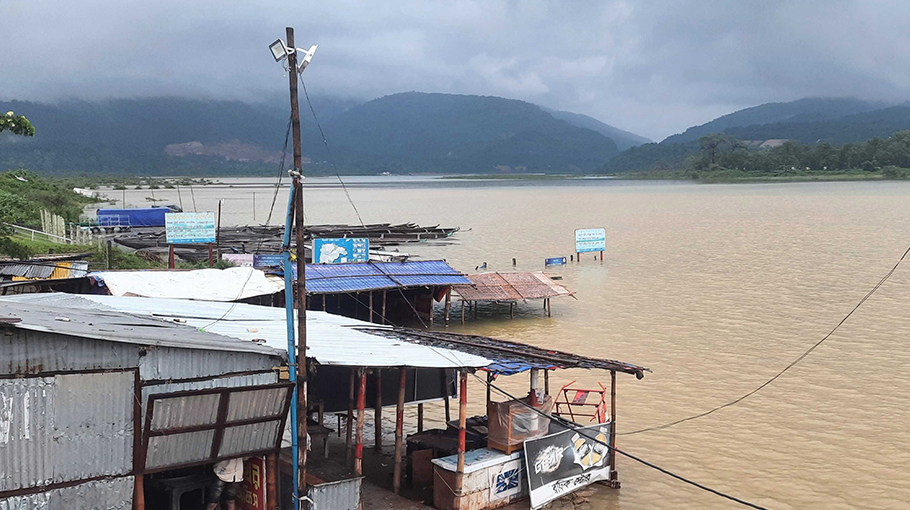Flood hits tourism sector in Sylhet
Millions of taka lost as tourist centres close

The tourist centres of Sylhet, typically bustling during Eid, stand empty and deserted due to severe flooding. Popular destinations like Sadapathar, Jaflong, Bichnakandi, and Ratargul are submerged, leading to losses amounting to hundreds of millions of takas for the tourism sector.
In Companyganj, Sylhet, the Sadapathar tourist centre is underwater, rendering it inaccessible. The Dhalai River has swollen from hill runoff, making the area impassable for tourists, who return disappointed from the ghat.
Tahmin Ahmed, President of the Sylhet Chamber of Commerce and owner of Hotel Nirvana Inn, highlighted the impact. "This is the peak tourist season, but sudden floods have forced the closure of Sylhet's tourist centres. Hotels and motels are shut down, causing significant financial losses."
On Thursday, the Surma and Kushiara rivers overflowed at five points due to upstream surges and heavy rains. As a result, 13 upazilas and 23 wards of the city corporation, including five bordering upazilas, are submerged. Over the last four days, more than 800,000 people have been trapped in floodwaters. The Baraikandi power substation is at risk, with the army working to protect it. The region’s residents are facing immense hardships.
In Sylhet's elite Shahjalal suburb, ground floors of homes and businesses are deserted as people evacuate. Traders are experiencing severe financial losses. In neighbouring India, continuous rains have caused landslides in Cherrapunji, Meghalaya, and Assam, exacerbating the flooding in Sylhet.
The district administration reported that over 800,000 people are affected by the floods. Deepak Ranjan Das, executive engineer of the Water Development Board, confirmed that water is breaching dams at several points along the Surma and Kushiara rivers.
Deputy Commissioner Sheikh Russell Hasan detailed the extent of the flooding: "23 wards of the metropolis and 106 unions in the district are affected. Around 825,256 people are impacted, with 50,000 stranded in Sylhet city."
To support those affected, 656 shelters have been opened, including 80 in the metropolis. Currently, 19,959 people are taking refuge in these shelters, though many prefer staying in high-rise homes of neighbours or relatives. The administration has set up control rooms and appointed dedicated officers to manage rescue operations and provide healthcare through union-based medical teams. With heavy rain forecasted for the next three days, the situation is expected to worsen.




